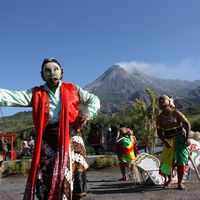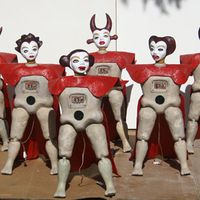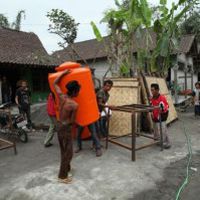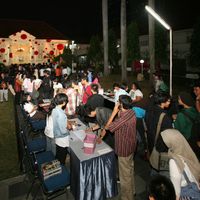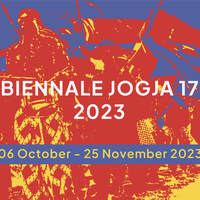Beyond the Myths of the Merapi Volcano
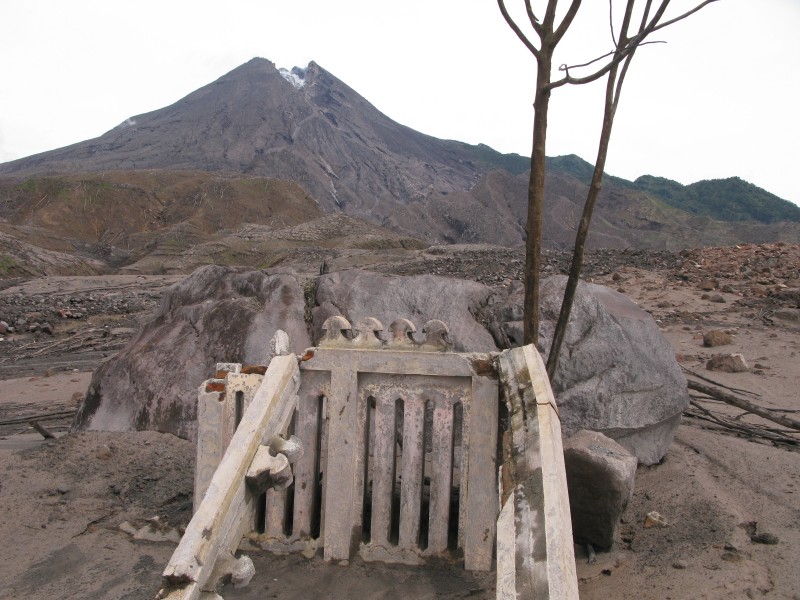 The Alliance Française de Singapour presents A Javanese Affair – a week showcasing Indonesian culture in Singapore from 21 February to 25 February 2012.Based on the works of French writer Dr Elisabeth D. Inandiak, the week-long affair showcases the myths surrounding the Merapi volcano in Central Java and the culture of the people who live in its shadows.
The Alliance Française de Singapour presents A Javanese Affair – a week showcasing Indonesian culture in Singapore from 21 February to 25 February 2012.Based on the works of French writer Dr Elisabeth D. Inandiak, the week-long affair showcases the myths surrounding the Merapi volcano in Central Java and the culture of the people who live in its shadows.Dr. Elisabeth D. Inandiak has lived in Java, Indonesia, for the last twelve years. In June 1998, she published a book in four languages (Bahasa Indonesia, French, Japanese and English) on the myths surrounding the Merapi volcano and the sacred village of Kinahrejo, and on the dreams of the guardian of the volcano, Mbah Maridjan. The book was illustrated by Heri Dono, a leading figure in Indonesian art since the 1980s, one of the most prominent contemporary South-East Asian artists.
In the paragraphs bellow Dr. Elisabeth D. Inandiak recounts the events and myths that inspired her writing.
Entitled “The White Banyan”, the book was released by coincidence right after the fall of Suharto in Indonesia. In its preface, the writer Sindhunata noted that the book symbolised the fall of the yellow banyan, emblem of the Golkar, the party of the dictator who had “confiscated” it for 32 years. The Indonesians finally reclaim the banyan, a sacred tree. However, this banyan is not yellow, but white.
On 26 October 2010, the village of Kinahrejo is blown by a very violent eruption. Mbah Maridjan and thirty-seven other villagers died in this eruption. With a circle of friends, including Heri Dono, I assisted the 400 survivors of the village who became landless refugees. Two weeks later, the people of Kinahrejo told me that they wanted to re-read “The White Banyan”. I brought them the last copies I had while telling them that they would be very sad, because everything that is in the book has been destroyed in the eruption. They replied that they wanted to confront reality as it is, and even asked me to narrate “the death of the white banyan” for the celebration to be held 40 days after the eruption. Heri Dono created a few new designs and we published “Merapi Omahku” (Merapi My Home).
On 9 December 2010, when Pak Margo returned to the site where Kinahrejo stood, the only object he found in the ruins of his home swallowed by ashes is Pentul, his dance mask. His face cleared instantly into the wondrous smile resembling that of the clown character of jatilan, a trance dance where warriors, armed with the keris and coloured whips, mount bamboo horses. It is said that these horses were the bodyguards of Prince Diponegoro who fought against Dutch settlers in the beginning of the 19th century. It is also said that they are the mounts of the Djinns who journey between Merapi and the Indian Ocean, bearing the secret messages of the goddess of the sea and the spirit of the volcano. This mask which was miraculously restored to Pak Margo gave him the force to weave and paint the horses of jatilan. And the volcano resumes its dance.
This affinity towards possession in the villagers seems to have been amplified by the volcanic eruption: their material world being destroyed, they unite through trance and masks in the memory of space and time of the village immortalised in the spirit of their ancestors, an invisible chain but one that is very much alive that allows them to reconstruct their intangible strongholds of identity even before their physical universe. In addition to jatilan, the people of Kinahrejo have another traditional art: the selawata, percussions singing praises to God in Javanese. They spoke to me with a lot of nostalgia, because not only had all their instruments been destroyed in the eruption, all the men that knew this tradition were dead as well.
In the month of August 2011, a friend of Heri Dono, Sutrisno, professor of music since 12 years at the University of Vancouver, and on holiday in Yogyakarta, revived a group of Selawatan with the villagers of Kinahrejo and gave them all his instruments. A month later, during the celebrations of the end of Ramadhan, the musicians of Kinahrejo were invited to perform in the palace of the sultan of Yogyakarta.
It was then that Heri Dono had the idea of an installation: “Sand of Merapi”. A sort of ‘remake’ of a historical installation he had done in April 1998, a few weeks before the fall of Suharto: “Land of Merapi”. Under the auspicious selawatan conducted by the guardian of the volcano, Heri had “borrowed” a truckload of earth from the village of Kinahrejo which he “installed” on the northern esplanade of the Yogyakarta palace. The mound of earth was surrounded by two loudspeakers that diffused at night a parody of a speech by Suharto recorded by actor Butet who imitated to perfection Suharto’s voice. Fifteen days later, the truck returned the earth to the village of Kinahrejo, to the same hole from which it had been taken.
Because earth belonged to no one, Man can only borrow it. The “Sand of Merapi”, is one which destroys but also serves to construct or reconstruct, for example the 300,000 homes pulverised by the earthquake of Yogyakarta in 2006 and the thousands from the volcanic eruption of 2010. It is also the movement of sand from north to south of Yogya via rivers, the lahar (volcanic mudflows) that are simultaneously a catastrophe and prosperity. Ngalor-ngidul, one might say in Javanese. From alor, the north, and kidul, the south. Ng marks the movement from north to south. An expression used when we have a conversation without head or tail, changing subjects. But ngalor-ngidul is also a dialogue of north to south, local and global, a singing which rises from darkness towards light.
You can find out more about Dr. Elisabeth D. Inandiak and her work in the latest edition of the Lien Magazine published by the Alliance Francaise de Singapour.
Similar content
from - to
21 Feb 2012 - 25 Feb 2012
from - to
24 Jun 2011 - 23 Oct 2011
posted on
22 Nov 2010
deadline
31 Aug 2012
from - to
06 Oct 2023 - 25 Nov 2023

